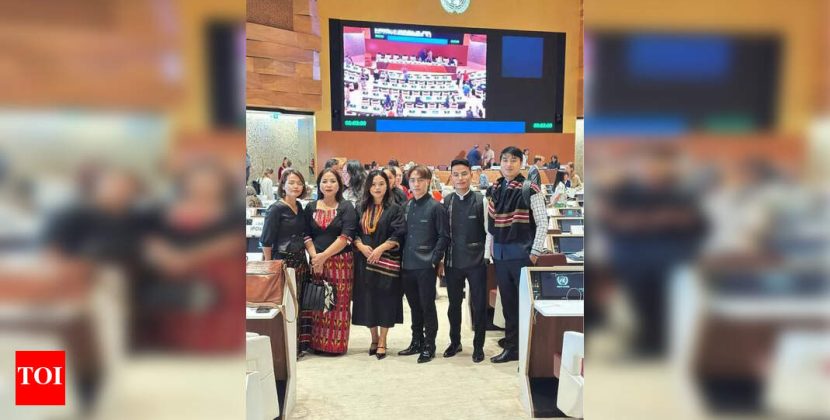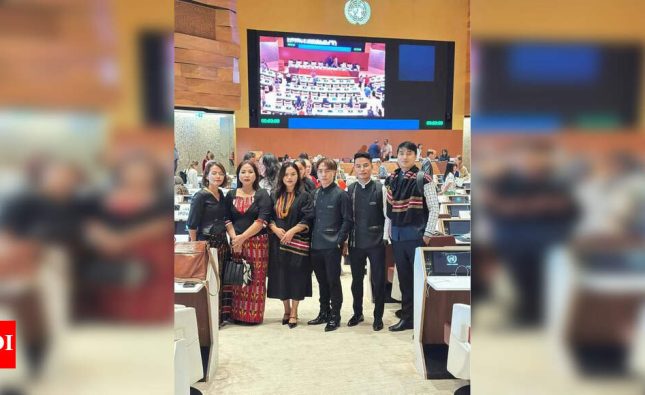
NEW DELHI: Defence minister Rajnath Singh on Tuesday conveyed India’s appreciation to the US for its unwavering support to New Delhi in its fight against terrorism in the backdrop of Operation Sindoor, in a telephonic conversation with his American counterpart Pete Hegseth.
This was their first conversation after India launched Operation Sindoor against Pakistan, New Delhi’s direct military response to the April 22 Pahalgam terror strike.
Singh also told Hegseth that India reserves the right to respond to cross-border terrorism.
“Glad to speak with the US @SecDef Mr. @PeteHegseth today. Excellent discussion to review the ongoing and new initiatives to further deepen India-US defence partnership and strengthen cooperation in capacity building. Conveyed my deep appreciation for the unwavering support extended by the US to India in its fight against terrorism. Looking forward to meeting him at an early date,” Singh wrote on X after the conversation.
Speaking on Operation Sindoor, Singh said India reserves the right to respond to and defend against terrorism and pre-empt as well as deter any further cross-border attacks, people aware of the matter said on condition of anonymity.
He also told Hegseth that India’s actions during the four-day clash were measured, non-escalatory, proportionate and focused on disabling terrorist infrastructure, the people added.
The two leaders had last spoken on May 1 when Singh told Hegseth that the Pahalgam terror attack in which 26 people were killed had exposed Pakistan as a rogue state that is destabilising the region and the world can no longer turn a blind eye to terrorism.
India launched Operation Sindoor in the early hours of May 7 and struck terror and military installations in Pakistan and Pakistan-occupied Kashmir (PoK) following the Pahalgam terror strike. It triggered a four-day military confrontation with Pakistan involving fighter jets, missiles, drones, long-range weapons and heavy artillery before the two sides reached an understanding on stopping all military action on May 10.
The two leaders also discussed a wide canvas of issues ranging from long-term cooperation in the defence sector, including training and military exchanges, to expanding the industry collaboration, the defence ministry said on Tuesday.
“They agreed to further build upon the momentum of this critical and mutually beneficial partnership across all its pillars such as interoperability, integration of defence industrial supply chains, logistics sharing, increased joint military exercises and cooperation with other like-minded partners,” it said.
Hegseth invited Singh to the US for talks to take the bilateral defence partnership forward.
Between the launch of the operation in the early hours of May 7 and the ceasefire on May 10 evening, Indian forces bombed nine terror camps in Pakistan and PoK and killed at least 100 terrorists. The Indian Air Force (IAF) struck two terror sites at Markaz Subhanallah in Bahawalpur and Markaz Taiba near Muridke, both in Pakistan’s Punjab province, while the army hit targets at seven places, including Mehmoona Joya in Sialkot, Sawai Nala and Syed Na Bilal in Muzaffarabad, Gulpur and Abbas in Kotli, Barnala in Bhimber, and Sarjal.
On May 9-10, the IAF struck military targets in Rafiqui, Murid, Chaklala, Rahim Yar Khan, Sukkur, Chunian, Pasrur, Sialkot, Skardu, Sargodha, Jacobabad, Bholari and Malir Cantt in Karachi. Later it emerged that India’s targeting of locations within Pakistan during the May 7-10 clash was more extensive than was previously known, with a Pakistani document acknowledging that Indian drones had struck locations ranging from Peshawar in the northwest to Hyderabad in the south.
The graphics in the May 18 Pakistani document detailing India’s drone strikes on May 8, 9 and 10 listed seven locations — Peshawar in Khyber-Pakhtunkhwa province, Attock, Bahawalnagar, Gujrat and Jhang in Punjab province, and Chhor and Hyderabad in Sindh province — that were not acknowledged as targets by Indian officials at any briefings held during or after the hostilities.
Pakistan’s Operation Bunyan-um-Marsoos, which was mounted in response to Operation Sindoor, “folded in eight hours” on May 10 belying Islamabad’s ambitious target of bringing India to its knees in 48 hours, chief of defence staff General Anil Chauhan said on June 3.











